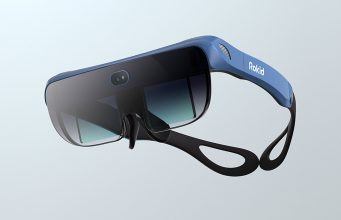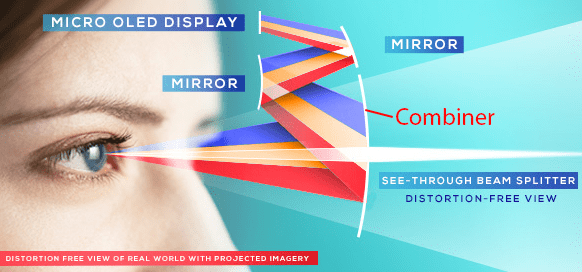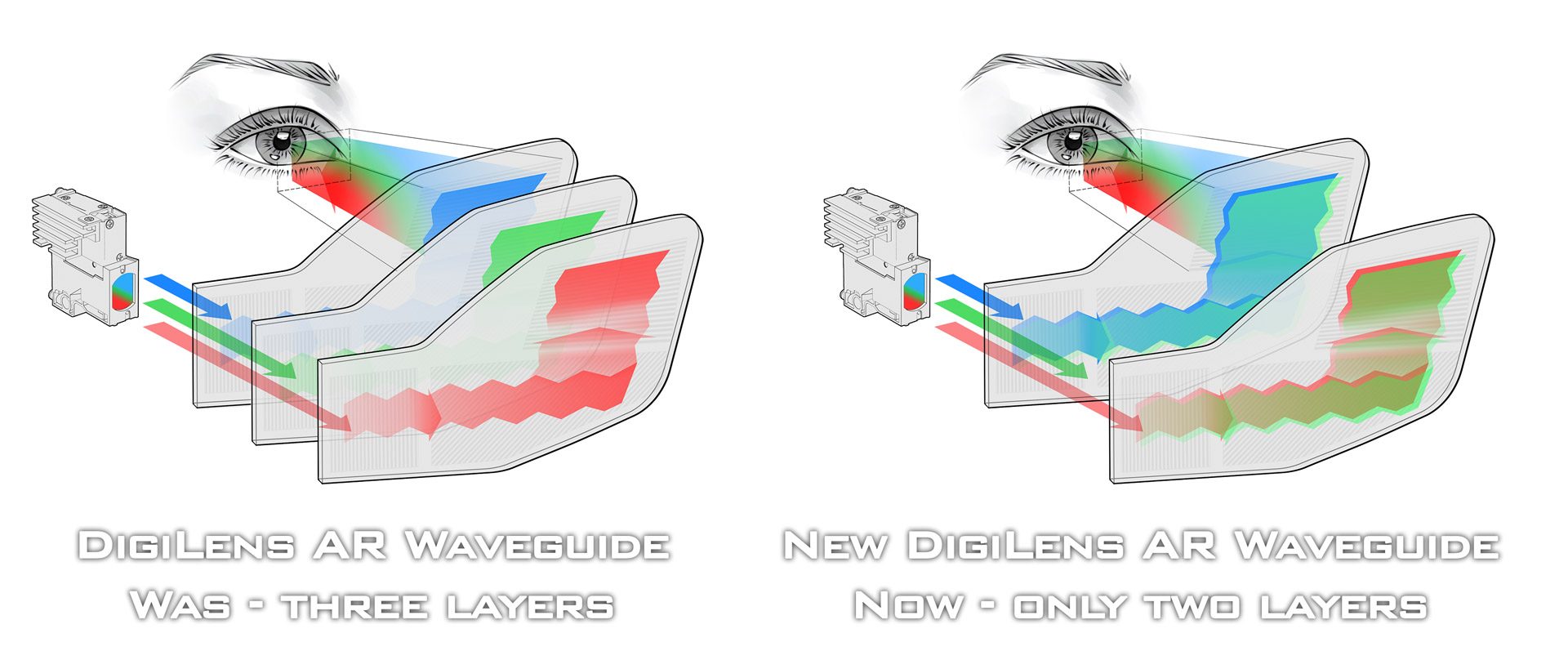
AR startup Rokid today unveiled a new AR headset called Rokid Vision 2, which incorporates waveguide optics into an impressively slim package.
To achieve its glasses-like form factor, Rokid Vision 2 doesn’t include onboard computing or power. For that, users can connect to smartphones, laptops, gaming consoles, and tablets, the company says.
Rokid, a Hangzhou, China-based startup, says its Vision 2 headset includes “the world’s leading diffractive optical waveguide technology with a light transmittance of 85% and 40° field of view (FOV).”
Note: If you’re curious to know a bit more about waveguides, check out the Waveguides & Birdbaths primer at the bottom of the article for a brief explanation of the two leading AR optics.
The headset also includes dual integrated speakers and dual microphones, which the company says can be used for hands-free voice control.
Rokid Vision 2 is said to arrive with some first-party software such as its ‘Virtual City’, which showcases the headset’s room-scale simultaneous localization and movement (SLAM) tracking based on its single RGB camera. It also includes a ‘Holographic Cinema’ for 2D, 3D and 360 media consumption, and a 360 immersive space called ‘Fantasy World’.
Currently, Rokid XR software system supports Android and Unity for app developers, and several mainstream hardware platforms, including HiSilcon, Amlogic, and Qualcomm.
Although there’s no price or release date yet, the company says it’s targeting a number of sectors, such as cultural tourism, exhibitions and museums, and the medical and health industry. It’s also ostensibly aiming to appeal to consumers with its focus on gaming, media consumption, and multi-screen desktop displays for the new work-from-home paradigm.
– – — – –
Waveguides & Birdbaths
Waveguides and birdbath optics are the two most common near-field display technologies currently in use in AR headsets. AR is still in its infancy, and both have their drawbacks. Here’s a quick and dirty primer which we aim to expand in a future article.
Birdbath optics include mirror/combiners that get their name from its spherical structure. Since they use a partially curved surface to reflect light—oftentimes from top-mounted microdisplay—they’re typically much cheaper to manufacture than waveguides, making them a natural choice for companies looking to hit consumer price points.

They have a comparatively higher FOV than most waveguides, but are also less bright, requiring fairly heavy shading on the exterior glass to filter out ambient light. Birdbath optics can be found in AR headsets such as Nreal Light and Lenovo’s recently unveiled ThinkReality A3 glasses.
Instead, waveguides guide light through a series of thin and transparent structures embedded in the glass or polymer. According to a paper by Microsoft’s Bernard C. Kress, these structures can be “simple prisms, microprism arrays, embedded mirror arrays, surface relief gratings (SRGs), thin or thick analog holographic gratings, metasurfaces, or resonant waveguide gratings (RWGs).”

Waveguides are more complicated, and generally more expensive to build than a birdbath optics.
Not including some impressively large-FOV waveguides currently in R&D, most waveguide-based AR headsets output a fairly small FOV, generally speaking. Microsoft’s HoloLens 2 boasts 53 degree diagonal FOV, and Magic Leap 1 is said to have a 50 degree diagonal FOV. For comparison, most consumer VR headsets range between 100 – 130 degrees.
Again, we’re working on a more expansive article to give you (and us too) a better understanding of the two major technologies at play in current AR headsets.
The post Rokid Reveals Vision 2 AR Headset with Waveguide Optics appeared first on Road to VR.
from Road to VR https://ift.tt/3ss8zGg
via IFTTT
No comments:
Post a Comment